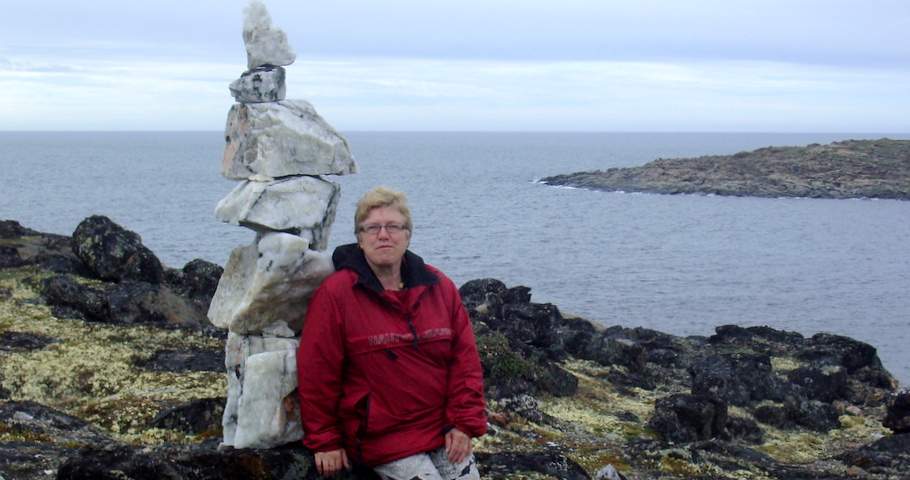The turmoil and anguish they had to go through are evident. Yet, they are still not provided the same opportunities we have even though they were "Canadian" even before we were.
The government and the Church stole their children while trying to convert them
Cheated out of their lands by unscrupulous negotiators and basically imprisoned on isolated lands, their culture was destroyed by the government and the Church stealing their children while trying to convert them. Viewed as savages and treated as animals for GENERATIONS, the last residential school was closed only 20 years ago. It's no wonder that our First Nations have deep-rooted issues with addiction and depression.Some of the ancestors moved away and moved on from the issues plaguing them
Some of the ancestors moved away and moved on from the issues plaguing them. Troubled First Nations folks generally don't have that opportunity. Reserves are often quite isolated...look at Attawapiskat as an example...where do you propose they go and how do you think they will get there? Nunavik with its bare treeline is also very isolated.The assumption we make that they can move on shines light on our heartlessness
We must have an understanding of the real issues at hand. As an example: There are good reasons why there are so many aspects to look at when we hope to curb sexual abuse: for years and years now, no one spared even a thought to how the children were sent out of their communities while the abuser, sometimes the wage-earner, stayed on in his house and community. Many of that existing knowledge was known to the Justice system who may or may not have their hands tied due to other mandates...Apprehension of children is big business in Canada
It supports the industry of child welfare. There are more native children in care now that at the time of the residential schools and that's just wrong. Whether it's Indigenous or African Canadians, these kids belong to their communities, with their biological families, with kin. More has to be done to prevent uprooting these children.Sure, we could argue that it comes down to parents, but think of this, why are we okay with demonizing welfare for families and forcing them into such extreme poverty and living, overcrowded conditions but we are okay with allowing foster parents to make 77$ per day on these kids that come to care?
On June 21st, 2016, 3 young women from Nunavut spoke to the Standing Senate Committee on Indigenous Peoples
"Due to many racist policies of the Canadian government, enabled by Canadian citizens, we have a housing crisis all across the North," said Iqaluit's Alethea Arnaquq-Baril."While we were once independent, we were forced off the land and crammed into poorly planned communities."
"But it's hard to help built strength and resilience in our communities when victims of abuse have to live with their abusers due to the housing shortage."
The high rate of suicide among Inuit and the extensive overcrowding is a frequent subject of inquests, government fact-finding missions, and statistical reports.
The focus here is systemic institutionalized racism
The focus here is systemic racism. To children who've been in the system (because of their overcrowded conditions and inadequate housing), it's a lifetime. It's time to walk and talk.What most people don’t know is that targeting the kids served so many years ago is a way to keep the money moving in the system. One site promotes fostering just as an industry would. Fostering can be seen as a great career with generous allowances.
Families struggle because of poverty-related issues and their children require placement
Can you imagine: the family cares for three kids, that's 77 dollars per day times 3 while the Inuit families struggle because of poverty-related issues end up having Child Protection Services at their doors and are being hauled into courts, only to end up losing their kids. Does that make sense?Using housing to tackle suicide, abuse
In her deeply emotional 11-minute speech, Arnaquq-Baril said the lack of affordable housing is at the root of social issues facing too many Inuit."Our will to live can be compared to none, it runs so deep in our bones... So, why are we dying at our own hands, at the worst rates in the world?" Arnaquq-Baril said, her voice breaking.
"Today, some rape victims have to choose between living with their abusers or sentencing them to death by forcing them into the cold," she said.
"When some of the most resilient people in the world are dying at their own hands, what does it say about the conditions we are living in?"
The high rate of suicide among Inuit and the extensive overcrowding is a frequent subject of inquests, government fact-finding missions, and statistical reports.
But Arnaquq-Baril drew on a heart-rending example to illustrate the issue.
"In the Arctic, that is no choice."








No comments:
Post a Comment